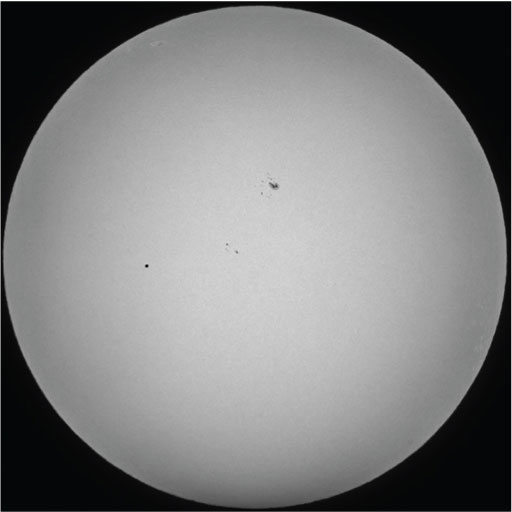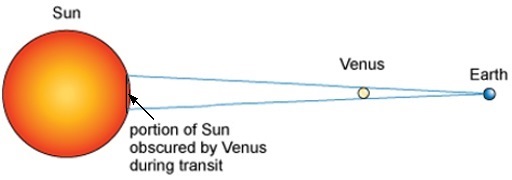2.1 Transits of Mercury and Venus
Figure 3 shows a close-up of the Sun during the 2004 transit of Venus. Venus is in front of the Sun from the Earth’s point of view, and has blocked some of the Sun’s light, appearing in silhouette.

The video at the link below is a speeded-up time-lapse sequence of the 2006 transit of Mercury. In reality it took five hours for Mercury to complete its transit.
Transit of Mercury: watch as planet passes in front of the Sun for first time in a decade [Tip: hold Ctrl and click a link to open it in a new tab. (Hide tip)]
In some images of the Sun, you will also see dark patches that are actually on the surface of the Sun. These are caused by sunspots. Figure 4 shows an example.

It is also possible for other, much closer, objects to get in the way and block some of the light from the Sun, as Figure 5 shows.

Figures 3 and 4 are photographs taken during transits of Venus and Mercury. The obvious difference between them is the size of the silhouette, with that of Mercury being much smaller. That makes perfect sense, because Mercury is less than half the size of Venus.
Astronomers know how big Mercury and Venus are. But if they didn’t, Figure 6 shows that they could work out the sizes of the planets by measuring their transits, given knowledge of three more things:
- how far away Mercury/Venus is from Earth
- how far away the Sun is from Earth
- how big the Sun is.

